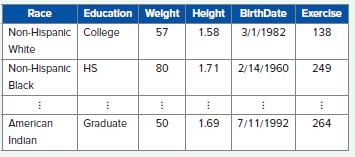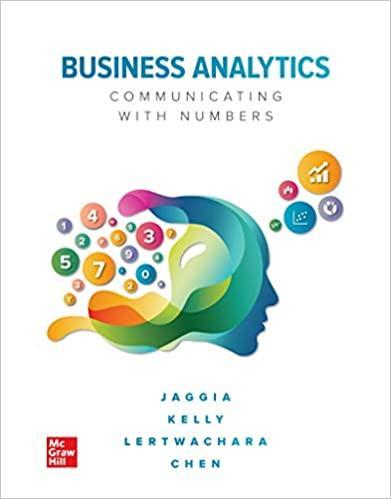Refer to Exercise 2.48 for a description of the problem and data set. a. The variable Race
Question:
Refer to Exercise 2.48 for a description of the problem and data set.
a. The variable Race contains five unordered categories: American Indian, Asian/Pacific Islander, Hispanic, Non Hispanic Black, and Non-Hispanic White. Reduce the number of categories to four by combining the two least frequent categories. Name the new category “Other.” How many observations are in the “Other” category?
b. Transform the Race variable with the new categories into dummy variables. Use the most frequent race category in the data as the reference category. Which category is the reference category? How many dummy variables should be created?
c. The variable Education contains four ordered categories: HS (lowest educational attainment level), Some College, College, and Graduate (highest educational attainment level). Replace the category names with category scores ranging from 1 (lowest) to 4 (highest). What is the average category score for Education?
Data from Exercises 48
Jerry Stevenson is the manager of a medical clinic in Scottsdale, AZ. He wants to analyze patient data to identify high-risk patients for cardiovascular diseases. From medical literature, he learned that the risk of cardiovascular diseases is influenced by a patient’s age, body mass index (BMI), amount of exercise, race, and education level. Jerry has compiled a data set with the following variables for his clinic’s patients: race (Race), education level (Education), body weight in kilograms (Weight), height in meters (Height), date of birth (BirthDate), and number of minutes of exercise per week (Exercise). The accompanying table shows a portion of the data set.

Step by Step Answer:

Business Analytics Communicating With Numbers
ISBN: 9781260785005
1st Edition
Authors: Sanjiv Jaggia, Alison Kelly, Kevin Lertwachara, Leida Chen





